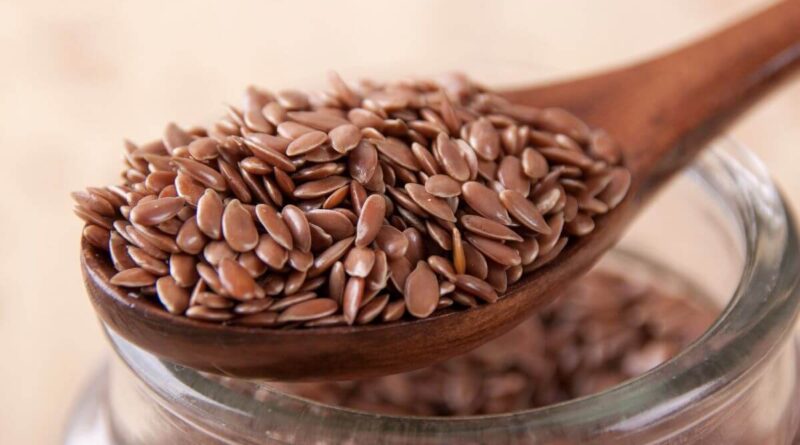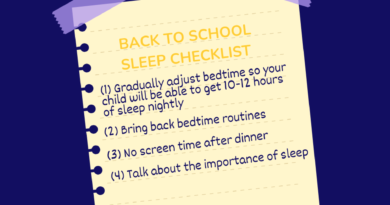Flax Seeds for Kids: A Comprehensive Guide by The Children’s Nutritionist
Flax seeds for kids have recently gained popularity as a superfood yet they have been a staple in diets for centuries.
If you are a parent looking for nutritious options for your children, read on to fully understand the benefits of flaxseed.
Flax seeds, also known as linseeds or alsi seeds, come in two main varieties: brown and golden. Both are packed with nutrients, making them an excellent addition to your child’s diet.
Ground flaxseed looks like a fine, nutty powder that can be easily mixed into various foods.

Nutritional Benefits of Flax Seeds for kids
Flax seeds, often considered a superfood, are packed with a plethora of nutrients that can significantly benefit children’s health and development. Here’s a closer look:

1. Rich Source of Omega-3 Fatty Acids
Omega-3 fatty acids, particularly alphalinolenic acid (ALA), are abundant in flax seeds. These essential fats play a pivotal role in brain function and development.
For children, adequate intake of omega-3’s can support cognitive abilities, improve concentration, and even aid in behavioural development. Moreover, these fats are essential for maintaining heart health from a young age.

2. High in Dietary Fibre
Flax seeds are an excellent source of dietary fibre, which aids in digestion. Regular consumption can help maintain a healthy gut, prevent constipation, and promote regular bowel movements.
For children, especially those transitioning to solid foods or experiencing digestive issues, flax seeds can be a gentle remedy.

3. Packed with Vitamins, Minerals, and Antioxidants
Flax seeds are a treasure trove of essential vitamins and minerals. They contain Vitamin B1, magnesium, phosphorus, and selenium.
Additionally, the seeds are rich in lignans, a type of antioxidant. They play a role in balancing hormones, especially during the adolescent years.
Antioxidants combat free radicals in the body, promoting overall health and reducing the risk of chronic diseases and cancer.
For growing children, these nutrients support immune function, bone health, and cellular function.

4. Protein
Protein is fundamental for growth and muscle development. Flax seeds are a good source of plant based protein, making them an excellent addition to your child’s diet.
For children, especially those involved in sports or physical activities, flax seeds can support muscle repair and growth.

Flax seeds for kids through the age groups
Incorporating flax seeds into a child’s diet can offer a range of health benefits. However, as with any food, it’s essential to ensure they get the right amount.
There are no specific guidelines for exact amounts but as a nutritionist, here are my recommendations. Let’s take a look at the benefits for specific age groups:

Flax Seeds For Kids – babies (6-12 months)
Supporting Brain Development: Flax seeds are rich in omega-3 fatty acids, crucial for brain development. Omega-3’s play a vital role in cognitive function, ensuring that infants have the best start in life.
Aiding Digestion: The high fibre content in flax seeds aids digestion, making it beneficial for babies who are prone to constipation. Regular consumption can help maintain a regular bowel habit.
How much flax should babies have?
It’s generally recommended to introduce flax seeds in small amounts, starting with just a pinch of ground flaxseed added to their food.
This can be gradually increased as your baby gets used to it.
There isn’t a strict upper limit, but moderation is key, especially when introducing any new fibre rich food to your baby’s diet.
Are flax seeds a Potential Choking Hazard For Babies?
Flax seeds are small and slippery, and while they are not commonly listed among top choking hazards like grapes or nuts, they can still pose a risk if given to babies in large amounts or without proper preparation. It’s essential to serve them ground or mixed into foods like porridge, yoghurt, or purees.
Are Flax seeds an Allergen:
While rare, some infants might be allergic to flax seeds. You may want to consult with a paediatric dietitian before introducing new foods.

Flax Seeds For Kids – Toddlers (12 months – 2 years)
Flax seeds are a good source of protein and essential fats, providing the nutrients toddlers need for growth.
The omega-3 fatty acids in flax seeds support brain development, ensuring toddlers continue to develop cognitively.
How much flax seed should toddlers have?
A general guideline could be 1 teaspoon of ground flaxseed a day. Again, it’s essential to ensure the flaxseed is ground to aid digestion and nutrient absorption.

3. Flax Seeds For kids – Older Children
Supports Academic Performance: The nutrients in flax seeds, especially omega-3s, can support brain function and potentially aid academic performance.
Physical Growth: Because flax seeds are a source of protein, that’s good for muscle development and overall physical growth.
How much should they have?
Older children can typically consume 1-2 teaspoons of ground flaxseed daily.
It’s essential to note that these are general guidelines, and individual needs can vary. Too much flaxseed can lead to digestive issues.

Digestive side effects of Flax Seeds
While flax seeds are brilliant for their numerous health benefits, especially in aiding digestion due to their high fibre content, they can also cause some digestive issues if children eat too many. Here are some potential problems associated with flax seeds:

Diarrhoea
Flax seeds are rich in soluble fibre, which can act as a laxative. While this can be beneficial for those suffering from constipation, too much can lead to diarrhoea.
The soluble fibre in flax seeds absorbs water and softens the poo, speeding up its passage. For children not used to eating a high fibre diet, or if they consume large amounts of flax, this can lead to runny poo or diarrhoea.

Tummy cramps and wind
The high fibre content in flax seeds can cause bloating and excessive wind, especially when introduced suddenly into your child’s diet or consumed in large quantities.
As your child’s body breaks down the fibre, it produces gas, which can lead to discomfort and cramping.
We always recommended gradually introducing flax seeds even in adults, in order to allow the digestive system to adjust.

Intestinal Blockage
While rare, there’s a potential risk of intestinal blockage if flax seeds are eaten without an increase in fluids.
The seeds absorb water and expand, and so without sufficient hydration, they can cause an obstruction in the gut.
Therefore when you are increasing flax in your child’s diet, I always recommend for them to drink plenty of extra water too.

Other downsides of flax
Flax seeds, like many other seeds and grains contain a compound called phytic acid, which can bind to minerals like magnesium, calcium, and zinc, and reduce their absorption in the intestines.
This reduced absorption only occurs at the time of eating, so for example if your child has flax at breakfast, they’ll still absorb all of their nutrients at lunch and dinner.
However, what this means is that it’s best not to have flax in all of your children’s meals and snacks. Stick to just 1.

How to Serve Flax Seeds to Children
Flax seeds are versatile and can be easily incorporated into a variety of dishes. However, the way they are served can influence their nutritional benefits.

Ground vs. Whole Flax Seeds For Kids
Ground flax seeds are often recommended over whole seeds. The body can digest ground seeds more easily, allowing for better absorption of the nutrients.
Whole seeds might pass through the digestive system undigested (you might see them in their poo) which means your child won’t get all the health benefits.
Flax Seed Oil
Flaxseed oil is another way to get the benefits of flax seeds. It’s a concentrated source of ALA, the plant based omega 3 fatty acid.
However, it doesn’t have the fibre that whole or ground flax seeds have.
You can’t cook with flaxseed oil as it breaks down at high temperatures and loses its nutritional benefits but it can be drizzled over salads, used to make a dip or even added to smoothies!

How to Incorporate Flax Seeds into Your Child’s Diet
Flax seeds, with their mild, nutty flavour, can be seamlessly integrated into a variety of dishes. Their versatility means that even the pickiest eaters can benefit from their nutritional value.
Here are some creative ways to introduce flax seeds to your child’s meals:

Ground Flaxseed in Smoothies or Porridge
Smoothies:
One of the easiest ways to incorporate flaxseed meal is by adding it to smoothies. Its subtle taste blends well with fruits, yoghurt, or milk.
For a nutrient-packed breakfast or snack, blend together bananas, berries, a spoon of yoghurt, a splash of milk, and a tablespoon of ground flaxseed.
Not only does it enhance the nutritional profile of the smoothie, but it also adds a creamy texture.
Porridge: Your child’s porridge can be made even more nutritious with a sprinkle of ground flax seeds. As you cook the oats, just stir it in.
The warmth will release the nutty aroma of the flax, making the porridge a bit more flavorful. You can absolutely top it with fruits or one of my recommended porridge toppers for added taste.

Baking with Flax Seeds:
Flax seeds can be a secret ingredient in your baked goods, adding nutrition without compromising on taste.
Muffins and Pancakes: Ground flax seeds can be mixed into the batter of muffins or pancakes. It adds a slight crunch and enhances the texture. For children who are fussy eaters, this is an excellent way to hide the seeds in their favourite treats.
Breads: If you bake bread at home, consider adding ground or whole flax seeds to the dough. They lend a rustic texture and increase the bread’s fibre content.
Cookies: You can add ground flaxseed to cookie recipes, especially oatmeal and raisin or chocolate chip cookies. It binds the ingredients together and offers a richer taste.
Try my vegan baked oats – not quite a cookie – more of a breakfast bar. They’re delicious and great for busy mornings.

Flaxseed Oil Dressings
Flaxseed oil, rich in omega-3 fatty acids, can be a healthier alternative to regular oils in dressings.
Salads: Create a simple salad dressing using flaxseed oil, lemon juice, a touch of honey (over 1’s), and some herbs. Drizzle it over fresh salads. The oil’s nutty flavour compliments the freshness of the veggies.
Dips: Mix flaxseed oil with mashed avocados and a dash of lemon juice to make a nutritious dip. It’s perfect for snacking with bread sticks or whole grain crackers.
Pasta: For a quick and nutritious meal, toss cooked pasta in flaxseed oil, add some sautéed veggies, and a sprinkle with cheese. The oil adds a unique flavour profile that kids often love.

Here are some of my favourite child friendly recipes that include flax seeds:
2.Berry and Flax Seed Smoothie (this recipe is not suitable for under 1’s as it contains honey)
3.Flaxseed and Oatmeal Cookies
4.Banana and Flax Seed Muffins
7.Chocolate and Flax Seed Brownies
8.Flaxseed and Vegetable Stir Fry
10.Flaxseed and Berry Yogurt Parfait

Versatility of Flax Seeds
Flax seeds are not just nutritious; they’re also incredibly versatile in the kitchen. Have you heard of a flax egg?
Flax Egg
A ‘flax egg’ is a vegan egg substitute that can be used in baking.
To make a flax egg, mix one tablespoon of ground flaxseed with three tablespoons of water, then let it sit for about 15 minutes until it becomes gel like.
This can be used in recipes that call for an egg, making it great for vegan or allergy friendly cooking or just for when you’ve run out of eggs!
Here are some of my favourite child friendly recipes that use a flax egg:

Storage and Shelf Life
To retain the nutritional benefits of flax seeds, proper storage is essential:
Whole Flax Seeds: Can be stored in a cool, dark place for up to a year.
Ground Flax Seeds: After grinding, they should be stored in an airtight container. You don’t have to keep them in the fridge but if you do you’ll extend their shelf life. You can buy ready ground flax seeds.
Flaxseed Oil: This should always be stored in the refrigerator and used within a few weeks.
Discard if they smell fussy, the fat can turn rancid.

The post Flax Seeds for Kids: A Comprehensive Guide by The Children’s Nutritionist appeared first on The Children's Nutritionist.




